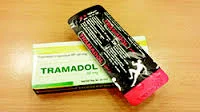According to a PsychologyToday blog by
Lisa Thomas approximately 25% of women have difficulty achieving orgasm
or have never experienced one, and even for women who are orgasmic, the
frequency is only around 50-70% of the time. Other researchers found that most women do not routinely (and some never) experience orgasm during sexual intercourse.
There are a number of physiological factors that can inhibit a woman’s sexual desire and her ability to reach climax: hormone imbalance, low testosterone, medications such as anti-depressants, her anatomy (the distance between the clitoris and the vagina), and, of course, partner issues. These can include the partner’s lack of appeal or insensitivity, and, in relation to a male partner, insufficient knowledge of the female body and premature ejaculation. To make matters worse, focusing on having a climax creates pressure in a woman that runs counter to sexual arousal; telling herself to “relax” simply doesn’t work.
1. Critical thoughts toward one’s body: Many women experience intrusive thoughts or critical inner voices about their body that interrupt the smooth progression of sexual excitement that typifies the arousal cycle of approaching orgasm. They can have self-conscious thoughts about their breasts: Your breasts are small. They’re not like other women’s breasts. Your breasts are misshapen. Or they may have negative thoughts about their genitals. Your vagina is too large. You’re too dry. You’re not clean, so don’t have oral sex.
Many women have internalized their parents’ negative attitudes toward bodily functions during toilet training, thereby developing images of their bodies and sexuality as dirty. In particular, the genital area becomes imbued with an anal connotation and is confused with excretory functions. Women’s shameful feelings about this area are extended to anything below the waist, (including menstruation) and they end up feeling dirty or contaminated in a manner that can interfere with their becoming aroused or achieving orgasm. When women have negative thoughts about different parts of their bodies they find it difficult to take pleasure in being touched in those specific areas. If they feel critical about their body image in general, it is more difficult for them to fully enjoy sex...
TO BE CONTINUED TOMORROW.
There are a number of physiological factors that can inhibit a woman’s sexual desire and her ability to reach climax: hormone imbalance, low testosterone, medications such as anti-depressants, her anatomy (the distance between the clitoris and the vagina), and, of course, partner issues. These can include the partner’s lack of appeal or insensitivity, and, in relation to a male partner, insufficient knowledge of the female body and premature ejaculation. To make matters worse, focusing on having a climax creates pressure in a woman that runs counter to sexual arousal; telling herself to “relax” simply doesn’t work.
Many developmental issues also affect women’s
sexuality: Parents’ intrusiveness, emotional hunger, withholding of
affection, indifference, hostility and intolerance of being loved leave
lasting scars on their offspring. Women react to the resultant emotional
pain by developing a poor self-concept or body image, distrust of their
partner and other protective and pseudo-independent defenses
that, in turn, predispose alienation in their relationships. Basically
insecure (anxious or avoidant) attachment patterns they developed in
childhood persist into adult life and strongly influence numerous
aspects of sexual relating.
In this article, we focus on seven psychological factors that tend to
negatively impact a woman’s sexual desire, arousal and orgasmic
capacity. The list is not meant to exhaust all possible psychological
issues; however, in clinical experience, it has been found to be
fundamental and understanding and useful in helping women achieve
richer, more satisfying sexual lives.1. Critical thoughts toward one’s body: Many women experience intrusive thoughts or critical inner voices about their body that interrupt the smooth progression of sexual excitement that typifies the arousal cycle of approaching orgasm. They can have self-conscious thoughts about their breasts: Your breasts are small. They’re not like other women’s breasts. Your breasts are misshapen. Or they may have negative thoughts about their genitals. Your vagina is too large. You’re too dry. You’re not clean, so don’t have oral sex.
Many women have internalized their parents’ negative attitudes toward bodily functions during toilet training, thereby developing images of their bodies and sexuality as dirty. In particular, the genital area becomes imbued with an anal connotation and is confused with excretory functions. Women’s shameful feelings about this area are extended to anything below the waist, (including menstruation) and they end up feeling dirty or contaminated in a manner that can interfere with their becoming aroused or achieving orgasm. When women have negative thoughts about different parts of their bodies they find it difficult to take pleasure in being touched in those specific areas. If they feel critical about their body image in general, it is more difficult for them to fully enjoy sex...
TO BE CONTINUED TOMORROW.











































